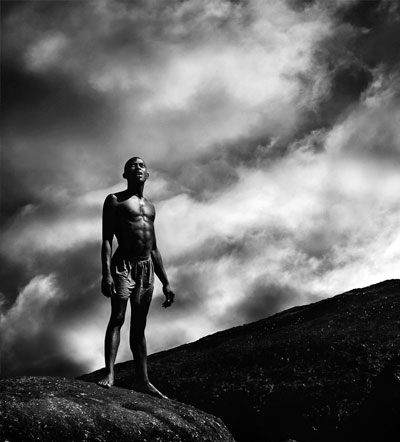
THIRD PLACE © Ian Spanier

Ian Spanier placed third in the portrait category of our 3rd Annual Global Travel Photo Contest. Ian Spanier, a NY based photograper, began taking photographs at six years old when his parents gave him his first point and shoot camera. Ian’s first full book of published work,
Playboy, a Guide to Cigars arrived in cigar shops November 2009 and the public version hit retail stores Spring 2010. The book is a collection of his photographs made in six countries spanning two and a half years. His newest book project,
Local Heroes: America’s Volunteer Fire Fighters, a collection of portraits made across the US is due out Fall 2012. Ian credits much of his inspiration to the original masters of photography as they shot what they saw. For him, there is no “one” subject that he photographs; he also chooses to shoot what he sees.
Slideshow


Strap on your bleep bloops and fire up your bloop bleeps because the O.G. electro-pioneers known as Kraftwerk are playing at New York’s Museum of Modern Art every single day for the entirety of this week, Tuesday to Tuesday. The legendary German outfit will be performing Kraftwerk – Retrospective 1 2 3 4 5 6 7 8, a sonic and visual exhibit of almost their entire catalog: one album at a time, one night at a time in the Donald B. and Catherine C. Marron Atrium.
When they first came about in 1970, Kraftwerk was like nothing else on the radar. Their futuristic tunes incorporated vocoders and computer speech software, a far cry from the traditional guitar wielding troubadours of the time. Their practically prophetic ability to channel a world steeped in technology and expressed largely via keystrokes and split wires make them one of the most influential bands, ever. Today, their impact is felt in almost every genre, from auto-tuned love letters to Kim Kardashian by Kanye West to the always lovely bedroom dreampoppers Beach House to Kathleen Hanna’s multimedia electroclash outfit Le Tigre to sweeping synth warrior M83. In 2012, we are all the robots that Kraftwerk predicted four decades ago.
(more…)
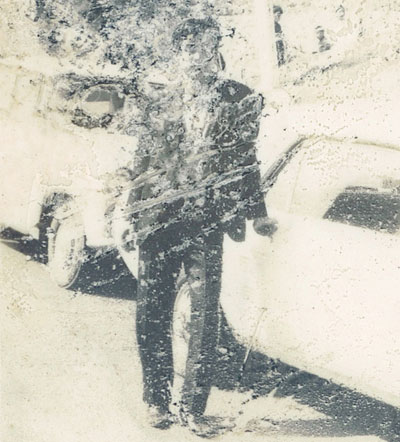
Courtesy of Salvage Memory Project

March 11th, 2011 was an unforgettable day for those who witnessed their homes, their schools, and their neighborhoods get swallowed by a massive tsunami. All things familiar disappeared in just a few minutes, leaving people in utter shock. In the town of Yamamoto in Miyagi prefecture, 50% of its surface area was flooded, damaging more than 4,000 buildings. Lying in the mountains of debris were years and years of personal photographs, physical archives of memories that were once taken for granted.
Two months after the quake, research students of the Japan Society for Socio-Information Studies. traveled to Yamamoto and began to collect these photographs and albums. The “Salvage Memory Project” quickly caught the attention of professional archivists and photographers through Twitter and other social media sites, and they offered to help. The task was extremely cumbersome and tedious. The volunteers discovered 750,000 photographs, which were cleaned and put into Google’s image archive service Picasa. With Picasa’s technology, the Salvage Memory Project was able to create a system in which photographs could be searched by either facial recognition or keyword. As a result, out of 750,000 photographs recovered, 19,200 were returned to their owners.
Slideshow
(more…)


As Occupy Wall Street prepares for a warm-weather remobilization, three producers are putting the finishing touches on the movement’s first artistic endeavor. Occupy This Album, out this spring, includes tracks from nearly 50 artists and will use its proceeds to sustain the Occupy protests. Though the album was able to make headlines by securing stars like Yoko Ono, Tom Morello, and Crosby & Nash, the idea was inspired by the acoustic music protestors played in Zuccotti Park. “There are far more unknown artists on this album than there are known,” explains executive producer Jason Samel. “The original idea was simply to shine the light that so many big name artists already had in the palm of their hands on unknown, unbelievable artists.”
It seems natural for a grassroots social movement to seek support in the music world, but the landscape has changed since “For What It’s Worth” reached the Billboard Top Ten. “Most pop artists these days adamantly refuse to take a stand on real issues, because they are so deathly afraid that anything controversial will effect their income,” Samel notes. He and his co-producers, Maegan Hayward and Alex Emanuel, still worked hard to include a huge range of backgrounds and styles, from acclaimed veterans to international niche artists.
(more…)
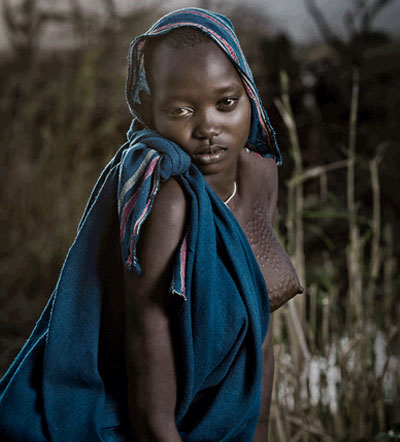
GRAND PRIZE Abyssinian Angel, Ethiopia, William Palank

William J Palank is an environmental portrait photographer based out of San Francisco. His love for international travel and little-known places started after his birth on a US Air Force Base in France, when he was given a free ride in the cargo hold of a military transport airplane at the age of two weeks. Palank is also a fine art printer and a teacher for Leica Akademie North America.
Slideshow

© Anja Hitzenberger

Opening this week is the first solo show of photographer Anja Hitzenberger, an Austrian photographer, filmmaker and video artist who divides her time between New York and Vienna.
The exhibition is the culmination of a two month residency that Anja took in the fall of 2011 in Beijing. Wandering around the site of Beijing’s Olympic Park, she stumbled across a huge tent that housed an immense food court. Inside she found stall after stall of fast food that had been created to appeal to the masses of impending visitors to the area.
Struck by the contrast of the saturated visual displays of food and the seeming apathy and disinterest of the respective employers Anja felt compelled to record it and the project “Take Out” was created.
Hitzenberger is an artist whose work is primarily based on the relationship of the body and its relationship to architecture and space. Her projects have taken her throughout the world, and she often depicts the local populace as part of her work. The “Take Out” project continues this theme, and offers a visual insight into a culture that is full of flux and complexity. Take Out is on view at Underline Gallery, 238 West 14th Street, New York, through May 13.
Slideshow
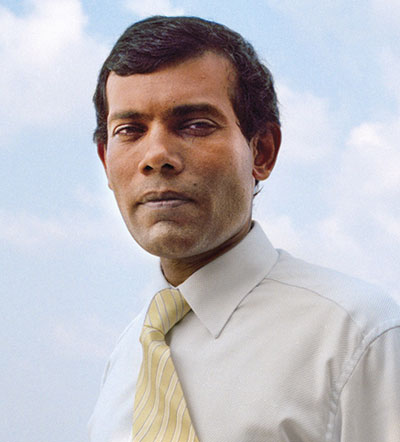
Pres. Mohamed “Anni” Nasheed. Chiara Goia.

As democracy flaps its butterfly wings across the Arab world– creating ripples from Tunisia to Wall St. – events foreshadowed back in 2008, when a small Islamic state in the Indian ocean elected their first democratic president. The Maldives, known primarily for it’s idyllic beaches, a paradise for the super wealthy, is the world’s lowest-lying nation, making it particularly vulnerable to the rising sea levels brought about by the changing climate. Their new leader, Mohammed Nasheed, a civil rights activist, had been imprisoned and tortured under the rule of the former dictator, Maumoon Abdul Gayoom. Documentary filmmaker Jon Shenk (
The Lost Boys of Sudan) was immediately drawn to Nasheed’s story:
“It just kind of jumped off the page, he came into office and started saying things about the environment that one wishes their leaders would say. I was just attracted to him because of the package of it – new in office, leading up to Copenhagen, the fact that it involved climate – which is an issue I really care about, and the fact that it could be a human story. At the time, it was like, wow – this is proof, a dictatorial Islamic country can turn into a democracy without violence. It was amazing. And then when we met him it was like, this guy, he’s a one in a billion kind of character – he’s handsome, he’s charismatic, he’s personable, he’s fun to hang out with. So we pitched him the idea.”
(more…)
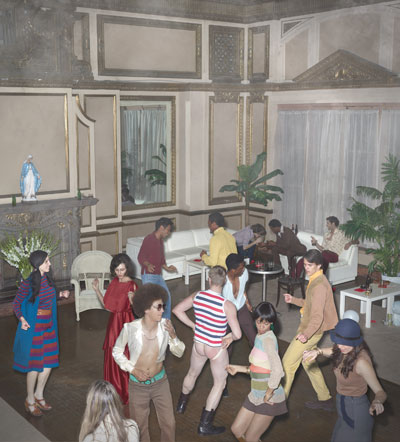
Club Versailles, 1974, 2012. Courtesy the artist and David Zwirner, New York

Playing with notions of time, veracity, and photojournalistic accuracy, Stan Douglas’s latest exhibition
Disco Angola ‘documents’ both the emergence of disco in New York City and the end of the Portuguese colonization of Angola and its subsequent civil war. To create the staged images in the exhibit, Douglas assumed the persona of a NYC-based photojournalist who travels regularly to Angola. He draws on disco’s African influences in order to equate the movement’s rejection of mainstream values with the Angolan fight for liberation. While the images themselves are clearly works of art, what is perhaps more interesting are the larger questions Douglas raises regarding the reliability of photographs to document truthfully and to alter what we remember as history.
Disco Angola will be at David Zwirner from March 9 – April 21. In May, Douglas will be awarded the prestigious Infinity Award by the International Center of Photography.
Slideshow
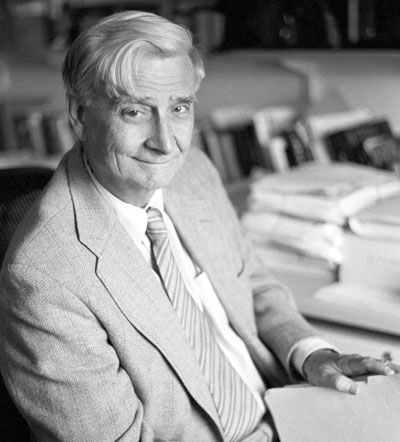
Jerry Bauer

Now that he’s approaching 83, Edward O. Wilson, the Harvard biologist and Pulitzer Prize-winning author, has decided the time is at hand to publish a culminating work that wraps up many of the things he’s spent his distinguished career studying and to once again put himself at the center of heated scientific debates. In truth, he’s probably energetic enough to continue well on into his nineties. We’d expect nothing less from the man who can credibly call himself the Darwin of the present day. The book, titled
The Social Conquest of Earth, presents some of the important discoveries that Dr. Wilson has made in the subject of advanced social behavior, many of which have had their origins in the study of ant colonies.
It turns out that we have much in common with ants and a small number of additional insect species. Mainly, there’s our shared inclination to be altruistic toward others of our kind, a phenomenon known as eusociality. It’s that behavior that forms the basis for so much of our success, but its origins haven’t always been understood. Especially puzzling is its rareness. E.O. Wilson spoke to Planet about the themes explored in his new book, including the notion that exploiting our eusocial instincts may turn out to be the key to saving our planet.
(more…)
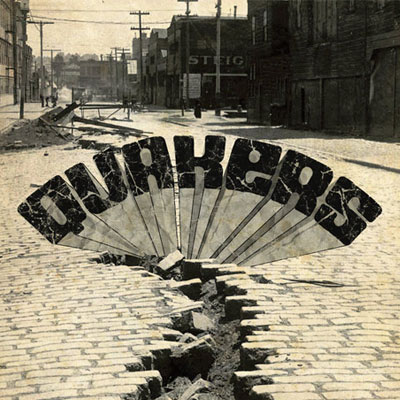

Quakers’ Ashley Anderson, AKA Katalyst, sits in his studio much like an astronaut in a space shuttle—except without the no-gravity floating aspect. Everything is within stretching reach, and just past that distance is the full expanse of Sydney, Australia, Anderson’s hometown. He might glance out of the window every once in a while, but Anderson seldom makes it out there—except recently. Anderson’s partner-in-Quakers, Geoff Barrow of Portishead (under his Fuzzface guise), brought his family to beach it in Australia, and Anderson went along for the rare experience.
It was an outing like this that brought Anderson and Barrow together a few years back. An annual escape from cold British winters provided the two with the opportunity to cultivate a working friendship. The association spawned their imprint, Invada Records, and birthed Quakers, which is rounded out by Portishead’s engineer, Stuart Matthews AKA 7-Stu-7.
The trio’s self-titled debut, which follows the music Quakers provided for Banksy’s Exit Through The Gift Shop, is the record that global worshippers of American hip hop wish they could make. Put together like a mixtape are over 40 bite-sized, overlapping, shuffle-resistant tracks of inventive, fresh sounding beats. These are embellished by numerous layers of original and borrowed creatively shaped, scratchy samples giving each number a lot of texture that Anderson refers to as “rugged.”
(more…)





 Facebook
Facebook Permalink
Permalink Digg
Digg Reddit
Reddit LinkedIn
LinkedIn StumbleUpon
StumbleUpon Tumblr
Tumblr











